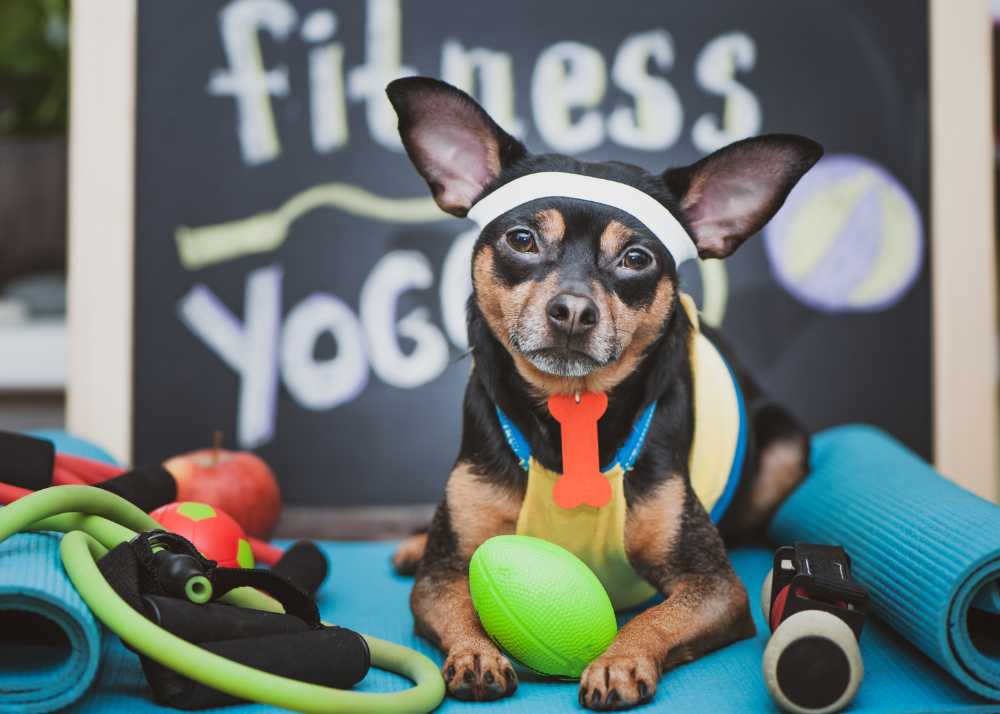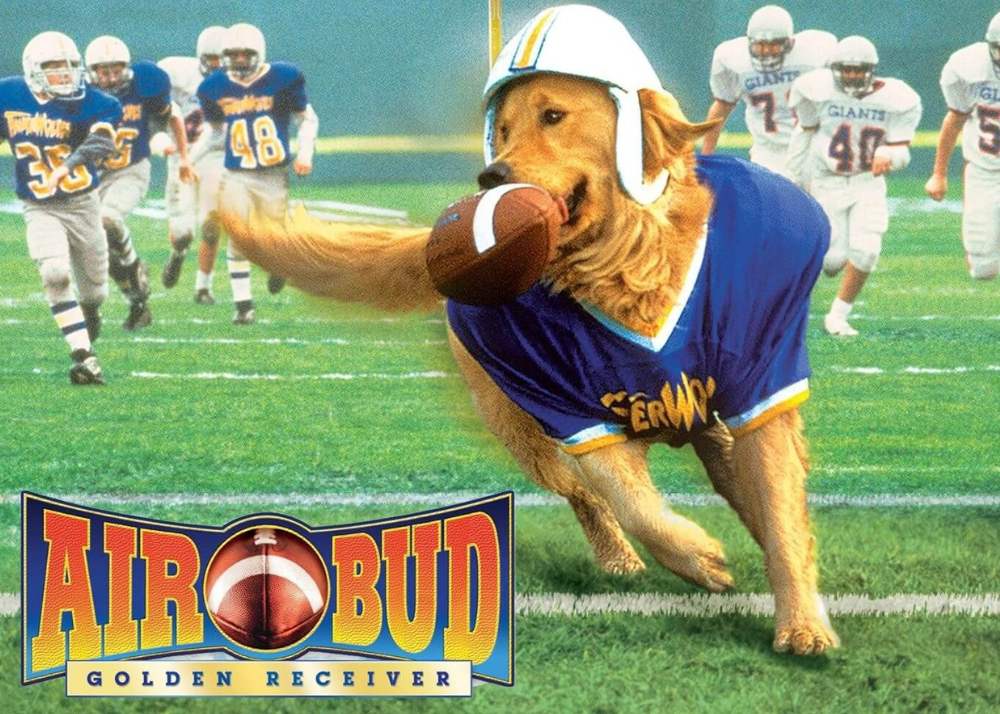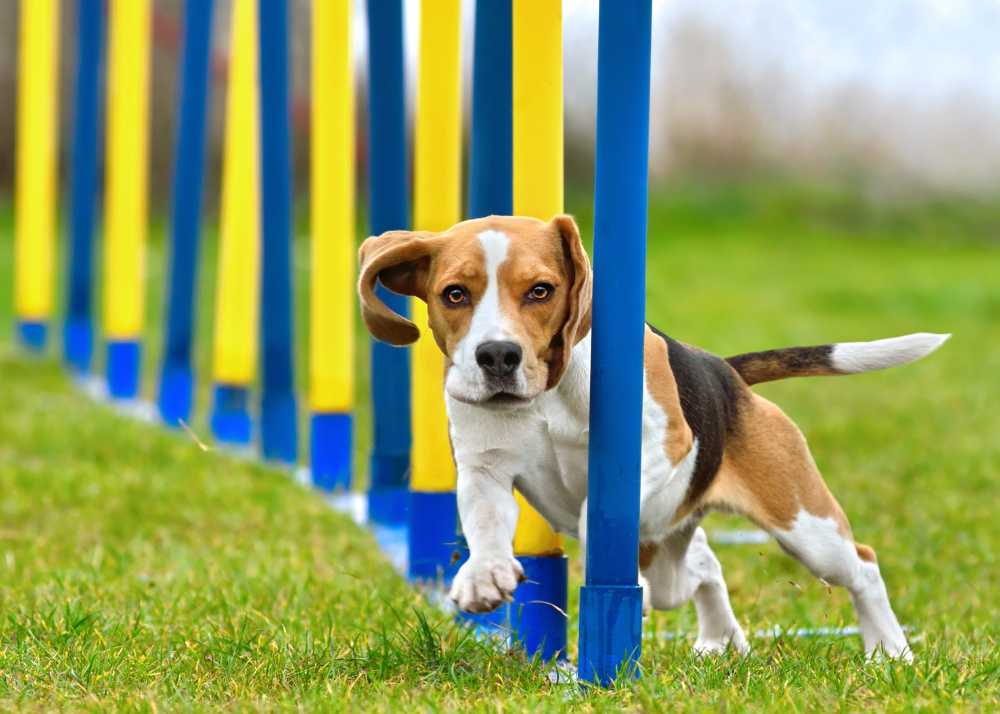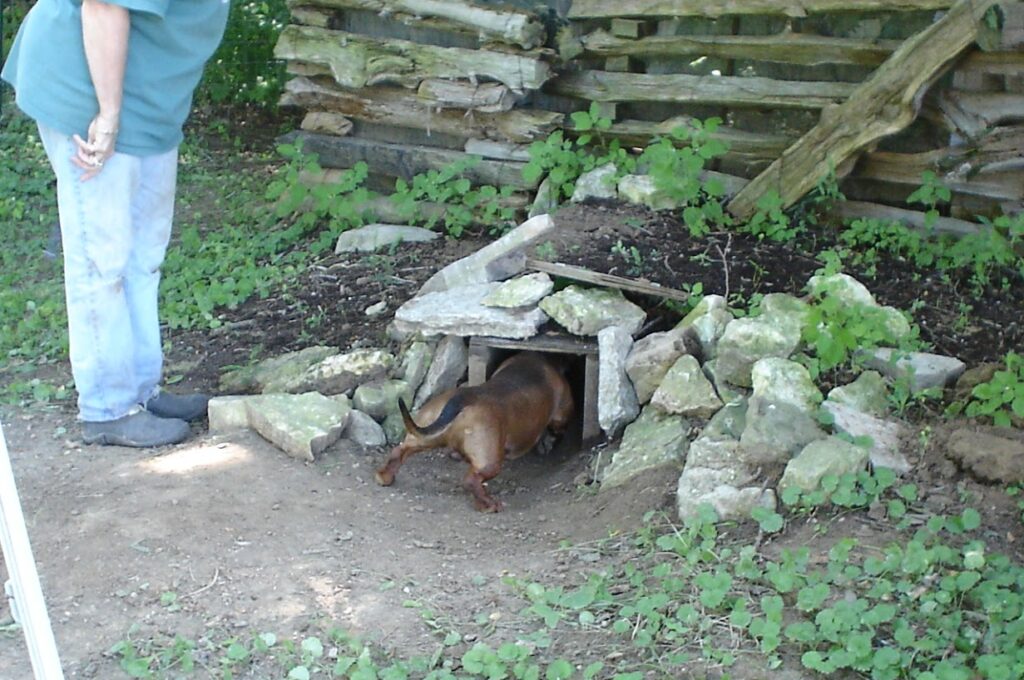If you picture Buddy from Air Bud: Golden Receiver when dog sports comes to mind, you may be interested to learn dog sports are a real entity outside of Hollywood movies. While no, they don’t dress up in little jerseys and helmets, they do get to be a part of a team, whether that’s with their handler or other dogs.
Dog sports are sports and training activities specifically designed for dogs. They capitalize on dogs’ natural abilities such as their athleticism, ability to detect scents, intelligence, and willingness to please their owners.
If you’re looking for fun ways to exercise your dog, participating in dog sports may be a great alternative for something other than long walks on the beach or a quick game of fetch in the backyard. Learn about the advantages of dog sports and explore some common dog sporting events to see if any of them are a match for you and your puppy.
Advantages of Participating in Dog Sports
The world of dog sports encompasses several different types of competitions and categories, including herding, obedience, protection, pulling, racing, water, and tracking and hunting sports. Regardless of their differences, all dog sports offer a similar set of advantages for owners and their dogs:
- Exercise: Keeps them physically active
- Mental Stimulation: Sharpens their brains
- Longevity: Extends their quality of life
- Camaraderie: Meet other dog owners who share the same interests
- Socialization: Opportunities to make doggy and human friends
- Travel: Competitions can take you to different parts of the country (or even the world)
- Bonding with your puppy: Forms opportunities for trust
- Personal growth: You can develop leadership, take pride in your wins, learn from your losses, and enjoy the journey rather than only focusing on the results
Types of Popular Dog Sports
Humans have been working with dogs for centuries to train them to perform specific tasks to enhance the human experience. However, it wasn’t until recently that dog owners could participate in sports with their dogs that tapped into their natural instincts in a fun, controlled environment. Let’s explore different popular dog sports.
Obedience
While all dogs should receive obedience training as part of their basic training commands for puppies, some dogs excel more than others at following instructions. Participating in obedience trials for dogs is a fantastic way to work on communication skills with your dog.
Obedience contenders usually begin with classes to learn what they will be asked to do. Dogs can begin when they are six months old and fully vaccinated. Canine competitors move their way up three levels: Novice, Open, and Utility. The Novice class can be done on a leash and asks dogs to perform simple commands, such as Heel, Stay, and Come. Open category adds jumping and retrieving off-leash. Lastly, the top Open level requires dogs to only use hand signals to perform scent work, directed jumping, and other exercises. To determine winners, all participants begin with a perfect score of 200, and points are then deducted. The AKC even offers virtual obedience tests for those unable to make it to an in-person competition.
Agility
Agility for dogs is a form of mental and physical training involving a dog’s ability to change its position quickly and nimbly through a timed, pre-set obstacle course. Dogs are judged on speed, accuracy, and their ability to follow directions.
Dog agility courses have different levels of difficulty, from beginner to expert or master level, and they each have a timeframe for when dogs need to complete the course. Each level contains a certain amount of obstacles dogs must complete in order including tunnels, A-frame structures, jumps, weave poles, and more. The course will always be different each time with 14-20 obstacles per dog agility course, so dogs have to rely on their communication skills with their handler.
Some people may assume that only certain dogs can compete, but agility is for every sized dog, whether purebred or mixed breed. A dog that will find success in agility is able to follow directions, has high energy and speed, and gets along well with other dogs.
Sago is a Rally Champion
Rally
If your dog is obedient but lacks the physical speed of agility, consider rally for dogs. Rally is a canine sport where dogs and their handlers follow a pre-determined course of stations featuring a specific behavior or task. Handlers and dogs work together to achieve the task before moving on to the next one in a timed trial. Dogs can advance through several levels of increasing difficulty from novice to expert levels.
Rally competitions for dogs provide camaraderie and bonding for you, your puppy, and other dog/human teams. Handlers can encourage their dogs throughout the course but may not touch their dogs, which means they have to pay attention to their handlers and follow commands.
Several organizations offer their own rules and courses for Rally competitions. In general, dogs should be at least six months old and have be up-to-date on vaccinations. Rally doesn’t have to happen inside the structure of a class, as several organizations have their own apps to practice at home.
Flyball
Flyball for dogs is unique in that it is a 4-dog team effort rather than a sport for one dog and one handler. Dogs in a team race over hurdles placed 10 feet apart to a box that launches a ball when they press a button with their paw. The dogs then catch the ball and race back to the finish line in a relay with their canine teammates. Dogs earn awards and titles based on points they collect during racing.
Dogs that are fast, athletic, intelligent, friendly, and not easily distracted tend to do their best during Flyball competitions. Typically, herding, terrier, and retriever dog breeds do well at Flyball, but any dog breed is welcome to compete. Courses are based on the dog’s height at the withers, and hurdle heights are adjusted accordingly to fit the dog’s size.
Depending on the organization, dogs typically begin Starter levels at a year and are eligible for more advanced levels around 18 months old. Some dog owners find Flyball to be a more relaxed, less competitive intense canine sport due to the necessity of working in teams instead of individually.
Sled Dog Racing
Many of us are familiar with the Iditarod race, a famous, historical dog sled race originally run to deliver life-saving medicine to Nome, Alaska. Today, sled dog racing is where teams of dogs pull sleds across harsh Arctic conditions to be the first to cross the finish line.
You might assume racers yell, “Mush! Mush!” to their team. “Mush” originates from the French word "marcher," which means “to walk.” However, the word itself is too soft to get a large team of dogs moving. Mushing is an overall term used to describe winter dog sports where dogs transport something, whether it’s a cart, sled, or humans on skis. Dog sled racing is one type of mushing sport.
Unlike other sports we’ve covered that welcome all dog breeds, sled dog racing events are best suited for certain types of dogs built with endurance and speed that are adaptable to harsh, unforgiving cold weather conditions. These dog breeds include Siberian Huskies, Alaskan Malamutes, Samoyeds, Chinooks, and other dogs built to thrive in frigid temperatures.
Earthdog trial courtesy of Dachshund Club of America
Earthdog Trials
“Earthdogs?” you may say. “Aren’t all dogs that live on Planet Earth considered ‘earthdogs?’” While technically true, earthdogs are dog breeds originally bred to hunt vermin, foxes, badgers, and other burrowing animals. These dog breeds include several terriers and Dachshunds - any dog with short legs low to the ground with a natural prey drive is a great candidate for earthdog trials. Some organizations like the AKC have a specific list of acceptable dog breeds, while others are a bit more flexible.
Also called earthdog tests, dogs follow a series of human-constructed tunnels when chasing the scent of a rat called the quarry (no rats are actually caught or harmed). It is a non-competitive sport where the goal is for the dog to successfully “work” the quarry, which means any active behavior like pawing, digging, staring, or more for a set amount of time. Dogs can work their way up through several levels of difficulty.
Dock Diving
Does your dog love to swim and jump? Dock diving may be a perfect fit! Also called Diving Dogs or Dock Jumping, this fun sport involves you throwing a favorite toy into the water, whether it is a natural body of water or a set-up structure. You and your dog wait at the beginning of a dock about 40 feet long. On your command, your dog races as fast as he or she can and jumps to retrieve the toy. The goal is to have the longest (or highest in some cases) jump possible per the particular level of competition. For distance trials, the length is measured from where the base of the dog’s tail enters the water.
All dogs are eligible to compete whether they are purebred or mixed breeds, but only purebred dogs can be considered as verified breeds eligible for titles from organizations like the AKC. Dogs are separated into categories based on height with dogs less than 16 inches tall being considered Lap Class and dogs over 16 inches as Open Class. Participants can join in on different competitions within dock diving, including distance, air retrieval, and hydro dash.
@blackdogimagery We are all about capping and control work right now. The way i look at this whole sport is that bitework is just another facet of obedience when you reach a certain point- but only with a proper foundation of grip, bite mechanics, and drive states. Showing up once a week just to let your dog go willy nilly at the end of the leash mind be fun for some but it is not for me. If there is no goal, and no progress being made, I do not want to be there. Getting and keeping this dog in a clear state of mind is a huge challenge for me - I let him get away with a lot amd struggle with maintaining clear boundaries and expectations (if you know me personally this should t be surprising 😂) but the both of us are making progress. #belgianmalinois #dutchshepherd #psa1 #protectionsportsassociation #bitesports #bitesport #workingdog #sportdog ♬ som original - letrasdorock
Protection Sports
Protection sports for dogs, also called Schutzhund, IPO, or IGP, is where highly trained dogs use their natural instincts to protect their handler from encounters such as searching exercises, attacks, car-jacking scenarios, and other unexpected situations. Fully-suited handlers that get “attacked” must be trained and wear full protective gear. These sports carry several assumptions by those unfamiliar with what it entails, so it’s important to learn the purpose of canine protection sports.
Protection sports provide a healthy outlet for working dogs to practice their courage, loyalty, self-control, and ability to listen to their handlers. One unique aspect is that dogs are competing against the sport and themselves to try and achieve a personal best result rather than other competitors. Four levels of competition offer increasingly difficult challenges, and dogs must remain focused and obedient no matter what comes their way.
Protection sports are suited for working dogs with an innate drive to guard and protect their owners and property. These dog breeds include German Shepherds, Belgian Malinois, Doberman Pinschers, Rottweilers, Akitas, Cane Corso Mastiffs, and more. Often, police and military dogs excel in protection sports.
Compete in a Dog Sport with a Pawrade Puppy
While we did not even begin to cover all the competitions on a list of dog sports for your puppy, our overview will hopefully pique your interest in all the fun you can have with your puppy. We’ll cover more dog sports in a future article.
Do you like to win but need a competitive buddy? We think all of our puppies for sale are winners, but browse our selection to pick the best contender for the World’s Cutest Puppy contest.
If you do get your Pawrade puppy involved in dog sports, we’d love to hear about it! Contact us to be featured on our social media channels.






